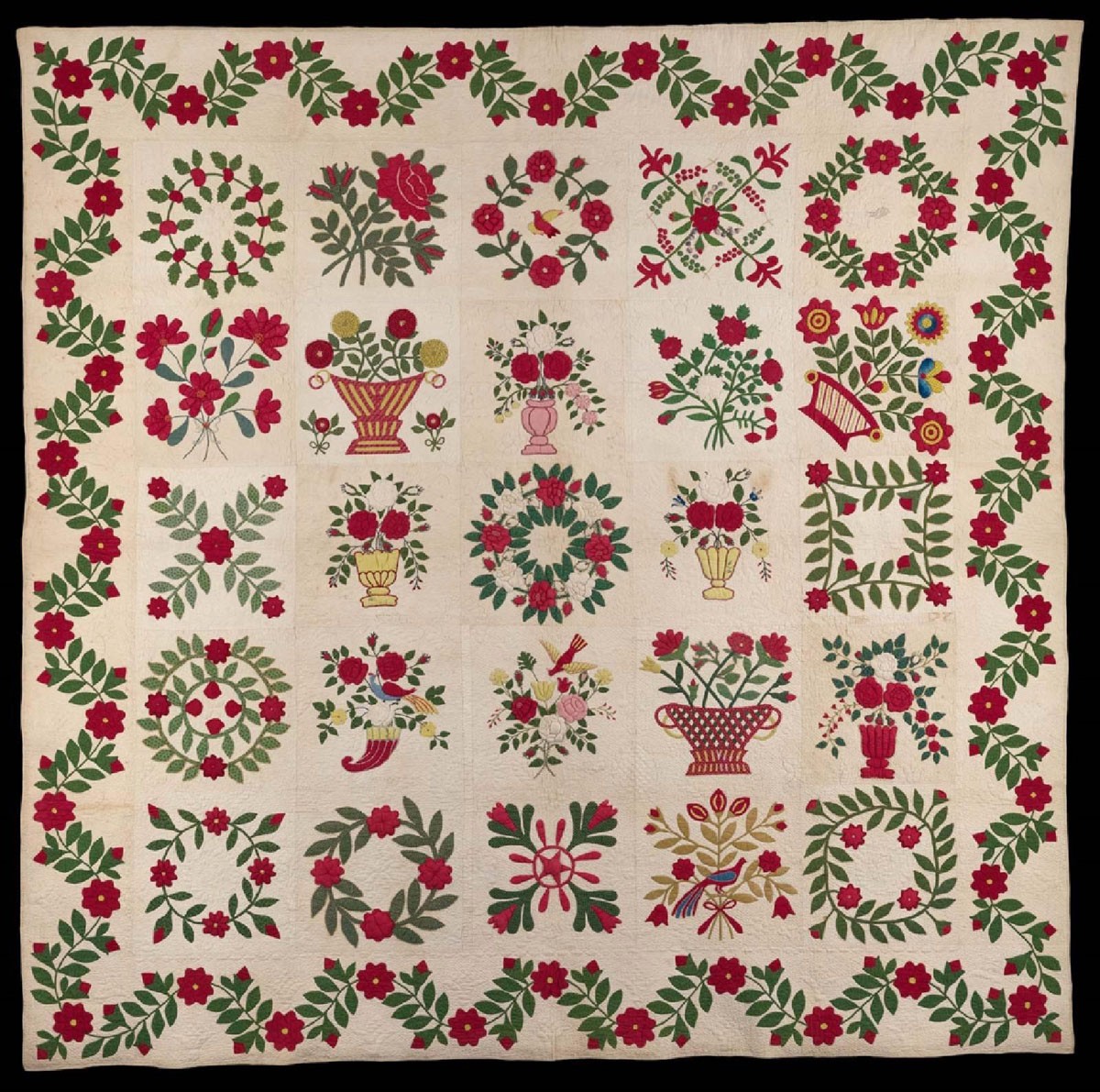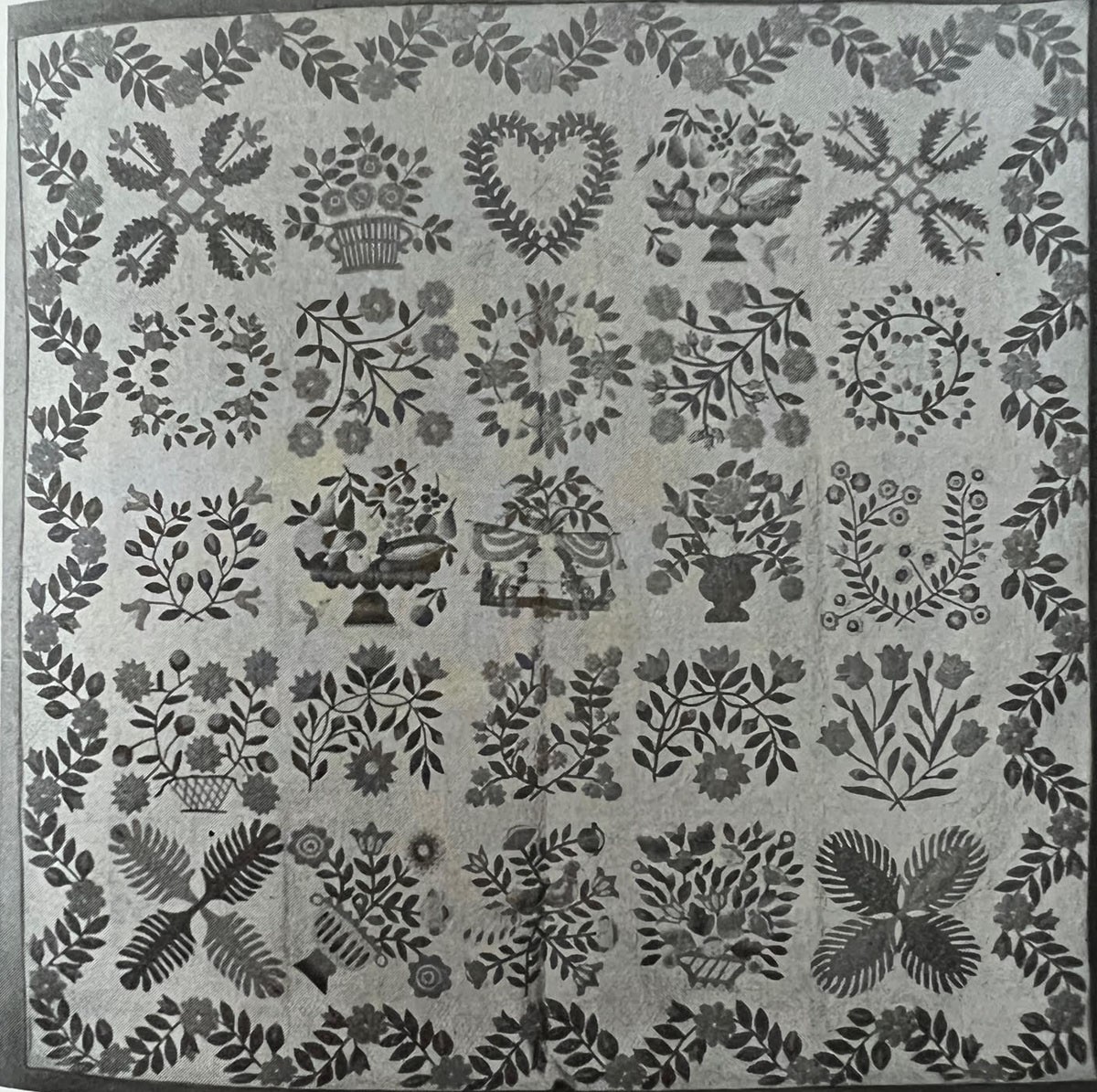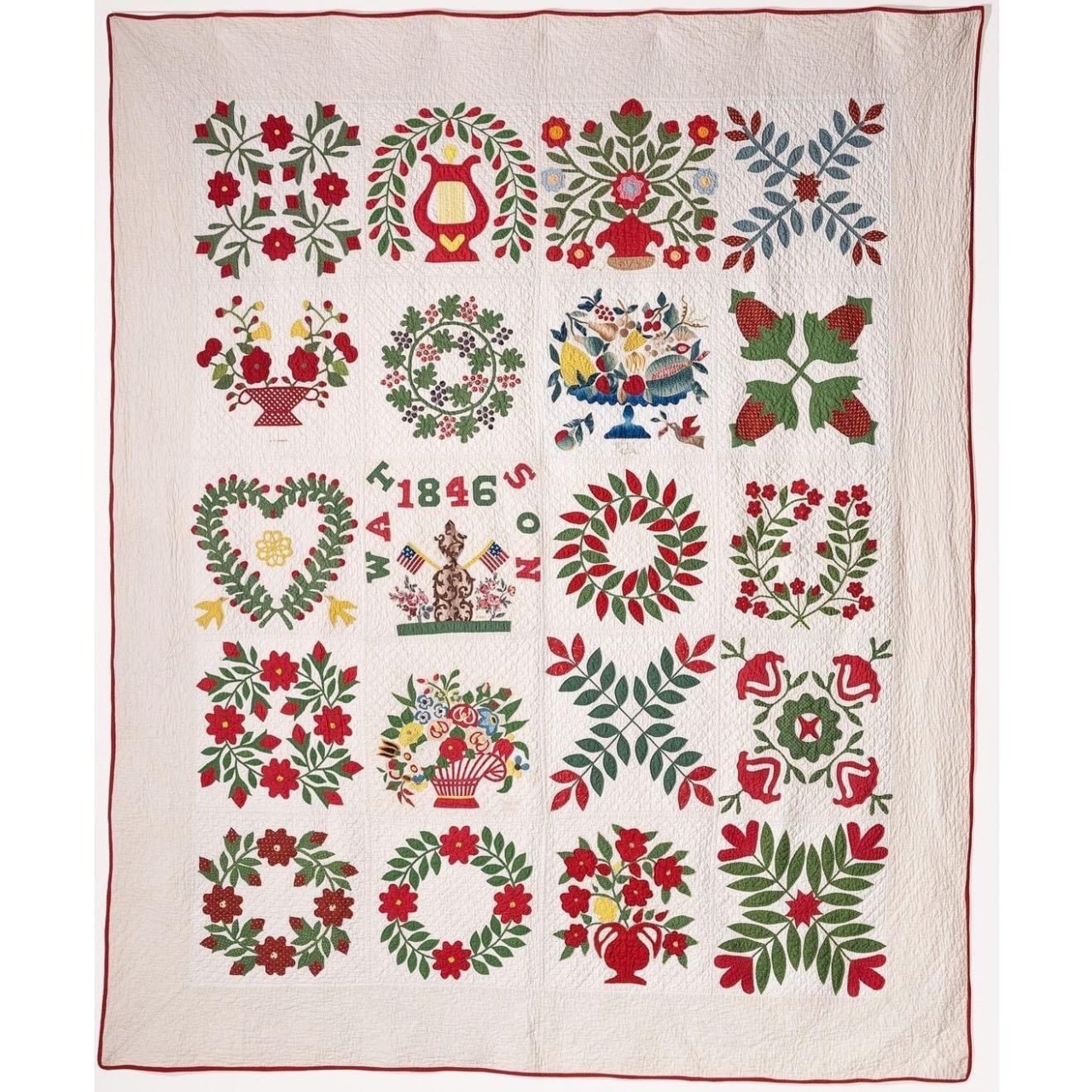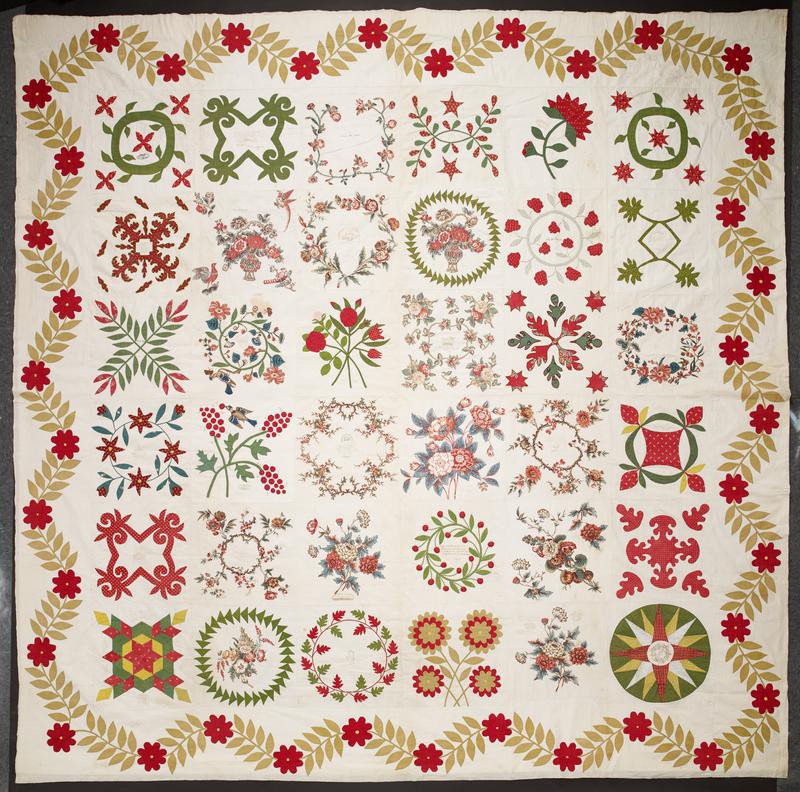Textiles and the Triplett Sisters
BAQ Quilting Frolic

There are more than 500 references to quilting frolics in US newspapers during the 19th century. Both men and women could participate in the quilting parties. Sue Reich deserves credit for bringing the frolic name to our attention in her book on signature quilts. According to Dr. William Dunton, in 1845 Mrs. Henry Richmond (who lived at Eutaw Street north of Biddle) gave an album block party. Or it may have been friends of hers decided to give her an album block party. The Richmond frolics resulted in two beautiful album quilts, the second one dated 1846, and a framed block.

As I was considering a recent invitation to a quilting party which we were calling a frolic, I wondered about how the ladies back then handled getting supplies. In mid-19th century Baltimore, you might stop by the Housekeepers’ Furnishing Emporium at 203 Baltimore Street to purchase quilting scissors and supplies. Housekeeper’s Furnishing Emporium ran multiple ads in the April 1849 newspaper The Baltimore Sun advertising quilting scissors. (Note the date of the ad doesn’t mean that those scissors were used in making either of the Richmond quilts.)

However, if you didn’t sew and didn’t have a housekeeper to make the block for you, then you needed to purchase a block. (FYI – I lost count of the number of ads for housekeeper for hire that required seamstress and/or dressmaking skills.) But I did find a place to go, Miss Chase’s Store at the corner of Eutaw and Biddle where she had album squares for quilts available for purchase. She advertised the availability of superior quality muslins, calico prints with fast colors and “album squares for quilts” at her millinery shop at Eutaw and Biddle streets. She ran several ads in January 1849 in The Baltimore Sun. Miss Chase also won several awards at the Fair of the Maryland Institute for rugs and a quilt. Additionally, the AQSG paper Baltimore Album Quilts: New Research in Uncoverings 2017, mentioned that Mary Chase’s name was inscribed on several BAQs.

After a successful frolic, if you obtained enough blocks to assemble a quilt the blocks would need to be trimmed, assembled and basted. Perhaps by Mary Simon (see link to a previous blog) or by one of the multiple quilters available during the period. Hannah’s diary mentioned a Mrs. Hare, or multiple women were listed in business directories as quilters: Nancy Siltz, Mary Irwin, and Mrs. Susan Martin. A survey of the Baltimore business directories, newspapers, and original documents provides evidence that the BAQ’s could have been made by many friends gathered or in combination with professionals.

